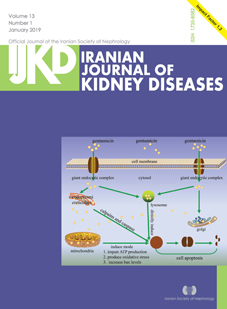Prevalence of Protein-Energy Wasting and Its Association With Cardiovascular Disease Risk Factors in Iranian Peritoneal Dialysis Patients
Abstract
Introduction. Protein-energy wasting (PEW) is prevalent in dialysis patients, and cardiovascular disease (CVD) is the leading cause of mortality in these patients. This study aimed to determine the prevalence of PEW and its relationship with CVD risk factors in peritoneal dialysis (PD) patients in Tehran, Iran.
Materials and Methods. All eligible PD patients in Tehran peritoneal dialysis centers were included in this cross-sectional study. The diagnosis of PEW was done based on the criteria of the International Society of Renal Nutrition and Metabolism. Serum high-sensitivity C-reactive protein, soluble intercellular adhesion molecule type 1, malondialdehyde, and lipid profile were measured.
Results. The prevalence of PEW was 29% in the PD patients. Significant associations were found between the prevalence of PEW in PD patients and sex (P = .01), age (P = .03), type of PD dialysis solution (P = .04), and microinflammation (P = .03). Serum C-reactive protein (P = .02), soluble intercellular adhesion molecule type 1 (P = .001), and triglyceride (P = .03) were significantly higher in the PD patients without PEW as compared to those with PEW, whereas high-density lipoprotein cholesterol level was significantly lower in the PD patients without PEW as compared to those with PEW (P = .003).
Conclusions. Our study shows that PEW is prevalent in Iranian PD patients. In addition, serum concentrations of CVD risk factors are dependent on the amount of glucose absorbed from PD solutions and are more impaired in PD patients without PEW as compared to those with PEW.


